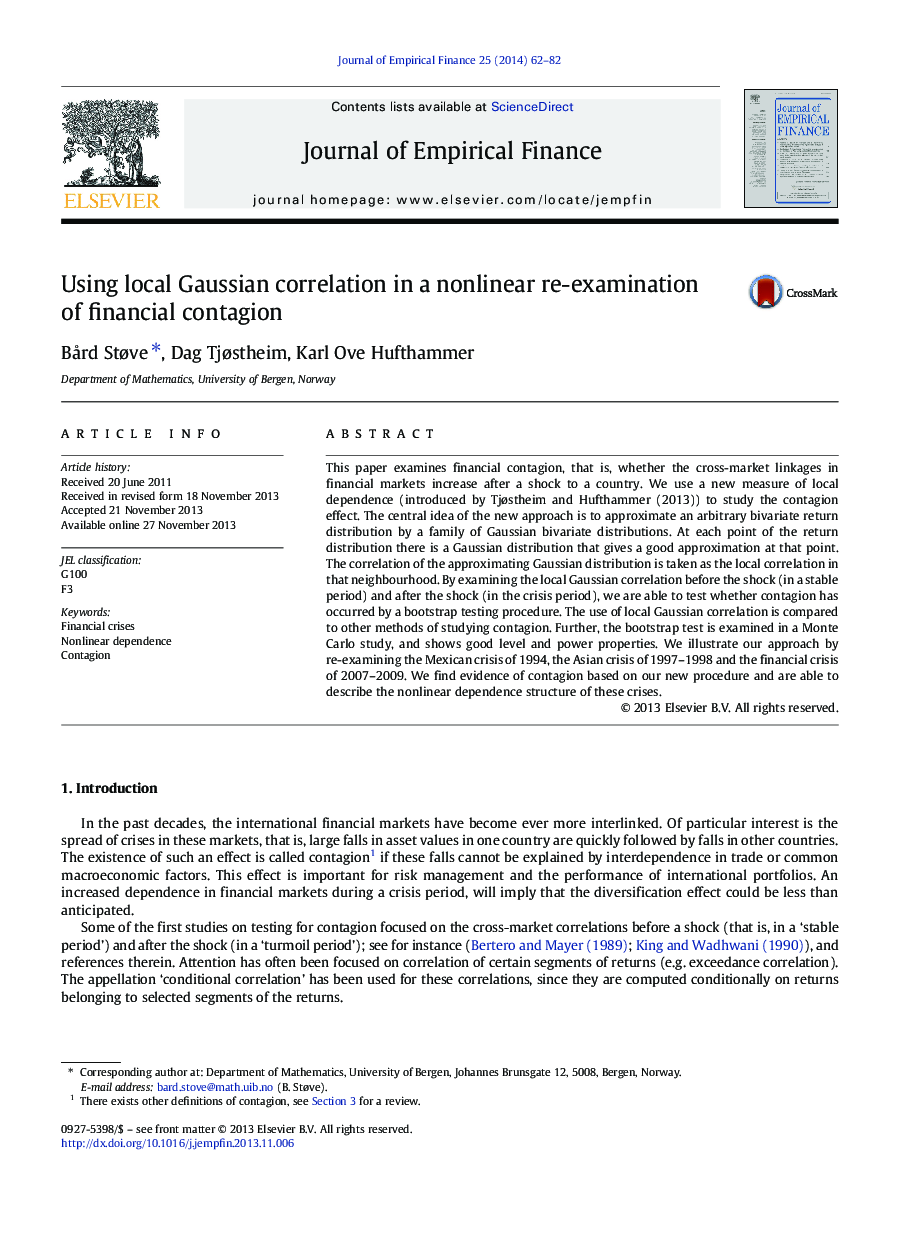| Article ID | Journal | Published Year | Pages | File Type |
|---|---|---|---|---|
| 958388 | Journal of Empirical Finance | 2014 | 21 Pages |
Abstract
This paper examines financial contagion, that is, whether the cross-market linkages in financial markets increase after a shock to a country. We use a new measure of local dependence (introduced by Tjøstheim and Hufthammer (2013)) to study the contagion effect. The central idea of the new approach is to approximate an arbitrary bivariate return distribution by a family of Gaussian bivariate distributions. At each point of the return distribution there is a Gaussian distribution that gives a good approximation at that point. The correlation of the approximating Gaussian distribution is taken as the local correlation in that neighbourhood. By examining the local Gaussian correlation before the shock (in a stable period) and after the shock (in the crisis period), we are able to test whether contagion has occurred by a bootstrap testing procedure. The use of local Gaussian correlation is compared to other methods of studying contagion. Further, the bootstrap test is examined in a Monte Carlo study, and shows good level and power properties. We illustrate our approach by re-examining the Mexican crisis of 1994, the Asian crisis of 1997-1998 and the financial crisis of 2007-2009. We find evidence of contagion based on our new procedure and are able to describe the nonlinear dependence structure of these crises.
Related Topics
Social Sciences and Humanities
Economics, Econometrics and Finance
Economics and Econometrics
Authors
Bård Støve, Dag Tjøstheim, Karl Ove Hufthammer,
